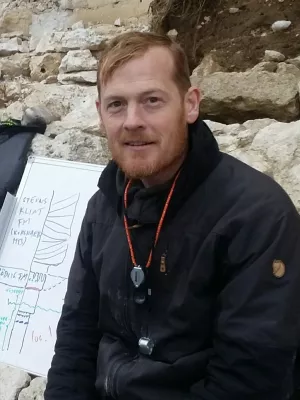
Mikael Calner
Professor

A new upper Middle Ordovician-Lower Silurian drillcore standard succession from Borenshult in Ostergotland, southern Sweden: 1. Stratigraphical review with regional comparisons
Author
Summary, in English
A recent drilling at Borenshult near Motala resulted in discovery of the stratigraphically most complete succession through the upper Darriwilian-Rhuddanian interval known in Ostergotland. The approximately 70m long drillcore succession is subdivided into eight formations, the oldest being the late Darriwilian Furudal Limestone and the youngest being the Rhuddanian Motala Formation. Conodonts are used for a detailed biostratigraphic classification of the Borenshult drillcore into three subzones of the Pygodus serra Zone, two subzones of the Pygodus anserinus Zone, and three subzones of the Amorphognathus tvaerensis Zone. The base of the Amorphognathus superbus Zone is taken to be similar to 10m above the Kinnekulle K-bentonite, that of the Amorphognathus ordovicicus just below the Fjacka Shale, and that of the Ozarkodina hassi Zone at the base of the Middle Member of the Loka Formation. Because of its unique lithology and paleontology and its wide geographic occurrence, this member is formally named herein the Skultorp Member. The previously uncertain stratigraphical position of the internationally known "Borenshult fauna" is shown to correlate with the Skultorp Member. A regional comparison of the Borenshult drillcore succession shows it to be most similar to coeval successions in Vastergotland and Dalarna but there are some significant regional differences. The average rate of net rock accumulation during late Darriwilian and Sandbian time is calculated to be similar to 3-4 mm/ka.
Department/s
- Lithosphere and Biosphere Science
Publishing year
2011
Language
English
Pages
149-171
Publication/Series
GFF
Volume
133
Issue
3-4
Document type
Journal article
Publisher
Taylor & Francis
Topic
- Geology
Keywords
- Middle and Upper Ordovician
- Rhuddanian
- stratigraphy
- conodont
- biostratigraphy
- Borenshult fauna
- Sweden
Status
Published
ISBN/ISSN/Other
- ISSN: 2000-0863

